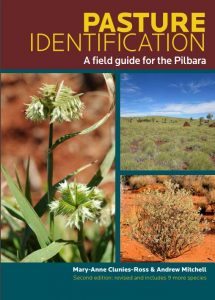The Pilbara Collaboration Group (PCG) is made up of six not-for-profit groups that undertake or have an interest in natural resource management (NRM) activities in the Pilbara and can provide a support to pastoral and Indigenous land managers. The group’s focus areas include, but are not limited to, weed and feral animal control, fire, threatened species management, property planning, restoration and rangelands rehydration work, rangelands self-monitoring and education and capacity building.
The group, whilst not an incorporated body, was made up of like-minded members and delivered through the Kimberley Pilbara Cattleman’s Association. The KPCA received funding through the WA State Government Natural Resource Management Program Community Capability Grants and supported by Royalties for Regions to lead the coordination of the PCG from early 2018 through to June 2019.
As part of the State NRM Project funding received, the KPCA coordinated the development and release of two tools to help pastoralists and other groups to identify plant species in the Pilbara and better monitor rangelands condition. More specifically, the tools include a new and improved edition of “Pasture Identification – A Field Guide for the Pilbara” plus the release of the Pilbara adaptation of Gascoyne Catchment Group’s Rangelands Monitoring App (see below for further information).
Adaptation of Gascoyne Catchments Group Rangelands Monitoring App for Use by Pilbara Pastoralists
Another great initiative that has been supported by the Kimberley Pilbara Cattlemen’s Association, on behalf of the PCG, is the adaptation of the Gascoyne Catchment Group’s Rangelands Monitoring App for use by Pilbara pastoralists. The Rangelands Monitoring Tool is an app that was designed by pastoralists for pastoralists. As such it is a user-friendly tool that allows pastoralists to easily assess their monitoring sites, setting a benchmark score to compare against on an annual or as needs basis.
The app is now fully functioning on the Apple store and available to the PiIbara and Gascoyne regions. Initial development support from Rangelands NRM through the National Landcare Program has been the catalyst in allowing this app to be developed and in the process, encourage strong alliances between the Gascoyne and Pilbara regions.
Further information is also available on the Gascoyne Catchments Group website:
https://gascoynecatchments.com.au/projects/
2019 Revised/Updated Pilbara Pasture ID Guide
Following its initial development and publication in 2014 by Greening Australia, a revised edition of the ‘Pasture Identification – A field guide for the Pilbara’ was released in 2019 through KPCA as part of the State NRM funded PCG Project. With 9 new species added it will assist Pilbara pastoralists to manage their grazing pastures. The guide was initially produced as part of the Pilbara Corridors project and was reprinted in 2019 by the Kimberley Pilbara Cattleman’s Association as part of the Pilbara Collaboration Project, a partnership between pastoralist, NRM groups and Government.
The Pilbara Collaboration Project has been funded by the WA State Government Natural Resource Management Program. Written by Western Australia’s arid shrubland plant guru Andrew Mitchell and Mary-Anne Clunies-Ross, the guide assists in the identification of different types of native pasture species readily grazed by their cattle such as various herbs, grasses and shrubs. Additionally it gives pastoralists information on the role different plants play in the ecosystem, how to tell if the pasture is in good condition or not, information around managing their pastures, including managing spinifex to bring tussock grasslands as well as information on weeds and poisonous plants.
